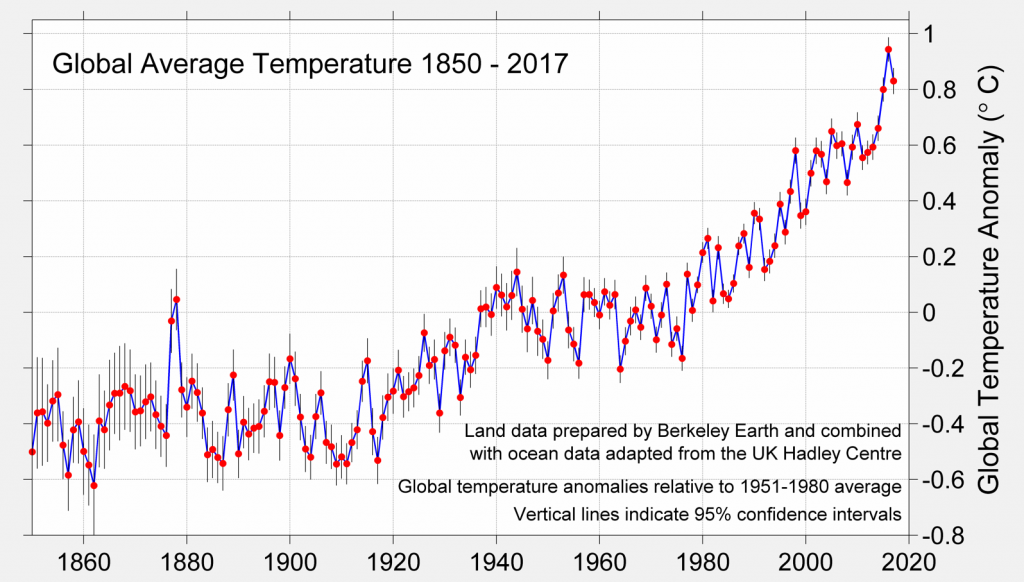
We think that this is the most extreme version and it’s not based on facts. It’s not data-driven. We’d like to see something that is more data-driven.
Wow! Who is this staunch defender of statistical methodology? This guardian of scientific method. This warrior of the value of empirical information to help identify and confirm a truth.
Ah, but wait a minute, here’s the rest of the quote…
It’s based on modelling, which is extremely hard to do when you’re talking about the climate. Again, our focus is on making sure we have the safest, cleanest air and water.
Any ideas now?
Since it requires an expert in doublespeak to connect those two quotes together, you might be thinking Donald Trump, but we’ll get to him in a minute. No, this was White House spokesperson Sarah Sanders in response to the US government’s own assessment of climate change impact. Here’s just one of the headlines in that report (under the Infrastructure heading):
Our Nation’s aging and deteriorating infrastructure is further stressed by increases in heavy precipitation events, coastal flooding, heat, wildfires, and other extreme events, as well as changes to average precipitation and temperature. Without adaptation, climate change will continue to degrade infrastructure performance over the rest of the century, with the potential for cascading impacts that threaten our economy, national security, essential services, and health and well-being.
I’m sure I don’t need to convince you of the overwhelming statistical and scientific evidence of climate change. But for argument’s sake, let me place here again a graph that I included in a previous post

This is about as data-driven as you can get. Data have been carefully sourced and appropriately combined from locations all across the globe. Confidence intervals have been added – these are the vertical black bars – which account for the fact that we’re estimating a global average on the basis of a limited number of data. But you’ll notice that the confidence bars are smaller for more recent years, since more data of greater reliability is available. So it’s not just data, it’s also careful analysis of data that takes into account that we are estimating something. And it plainly shows that, even after allowance for errors due to data limitation, and also allowance for year-to-year random variation, there has been an upward trend for at least the last 100 years, which is even more pronounced in the last 40 years.
Now, by the way, here’s a summary of the mean annual total of CO2 that’s been released into the atmosphere over roughly the same time period.

Notice any similarities between these two graphs?
Now, as you might remember from my post on Simpson’s Paradox, correlations are not necessarily evidence of causation. It could be, just on the strength of these two graphs, that both CO2 emission and global mean temperature are being affected by some other process, which is causing them both to change in a similar way. But, here’s the thing: there is a proven scientific mechanism by which an increase in CO2 can cause an increase in atmospheric temperature. It’s basically the greenhouse effect: CO2 particles cause heat to be retained in the atmosphere, rather than reflected back into space, as would be the case if those particles weren’t there. So:
- The graphs show a clear correlation between C02 levels and mean temperature levels;
- CO2 levels in the atmosphere are rising and bound to rise further under current energy polices worldwide;
- There is a scientific mechanism by which increased CO2 emissions lead to an increase in mean global temperature.
Put those three things together and you have an incontrovertible case that climate change is happening, that it’s at least partly driven by human activity and that the key to limiting the damaging effects of such change is to introduce energy policies that drastically reduce C02 emissions.
All pretty straightforward, right?
Well, this is the response to his own government’s report by the President of the United States:
In summary:
I don’t believe it
And the evidence for that disbelief:
One of the problems that a lot of people like myself — we have very high levels of intelligence, but we’re not necessarily such believers.
If only the President of the United States was just a little less intelligent. And if only his White House spokesperson wasn’t such an out-and-out liar.
